Content
Potatoes are a vegetable crop that is widely distributed throughout the world. Breeders have developed many varieties of this vegetable, which differ in taste, color, shape and ripening period. Early ripening varieties are suitable for early harvest. And for long-term storage, it is better to plant mid-season and late species. One of these is the Skarb potato, the name of which is translated as treasure. Let's give a detailed description of this variety, look at its photos and reviews from gardeners.
Origin
Potato variety Treasures got their start in Belarus. Its authors are Z.A Semenova, A.E. Zuikov, E.G. Ryndin and L.I. Pishchenko. Breeders brought it to the Research Institute of Potato and Horticulture in 1997. And in 2002, the variety was officially included in the Russian state register. It became possible to import it into the country, propagate and sell planting material.
Potatoes are suitable for planting in the Central, Ural, Northwestern and Volga-Vyatka regions of the Russian Federation. It is also popular in Moldova, Belarus and Ukraine.
Characteristic
Scarb potatoes have a medium ripening period and are intended for table use. Compared to early varieties, harvesting takes place 25-30 days later. The average growing season is 95-110 days.
Description of the plant and tubers
The variety is characterized by the formation of semi-spreading and medium-sized bushes, the height of which can reach 60 cm. The plant is strewn with small, oval-oblong leaves with smooth edges.
Snow-white inflorescences of ten flowers are formed on light green stems. Pollination occurs naturally. Sometimes after it green berries are formed, which usually fall off. They do not affect yield.
Each bush can produce from 12 to 15 tubers. They have an oval shape and a smooth golden skin, on which small eyes can be found. The potato pulp is tender and rich yellow in color. The mass of the tuber varies from 160 to 250 g.
Since the sugar content of Scarb potatoes is 0.4%, it has a sweetish taste. The vegetable contains no more than 18% starch, so it is widely used in cooking. Potatoes are made into chips and added to salads and soups.
Advantages
Advantages of potatoes of the Skarb variety:
- resistance to drought and low temperatures;
- excellent presentation;
- good yield;
- can be stored for a long time;
- excellent taste;
- resistance to many diseases.
Potatoes do not crumble when cooked, as they contain a large amount of starch. Scarb potato tubers are smooth and large, so this variety is in demand, and many gardeners grow it for sale.
Flaws
This variety also has a number of disadvantages:
- vulnerability to late blight of tubers and leaves;
- may be affected by ring rot;
- shoots may appear unevenly and for a long time;
- the young plant is sensitive to waterlogging;
- Before planting, the tubers must be germinated.
Cut potatoes are not used as seed. If you provide your potatoes with regular care, you can avoid many problems.
Productivity and ripening time
For economic purposes, this is a table variety that belongs to the mid-late variety. From the moment the seedlings emerge until the potato tubers fully ripen, no more than 85-95 days pass.
belongings is high-yielding variety. From one bush, gardeners receive from 12 to 15 tubers. With proper care, you can harvest up to 7 kg of potatoes per square meter of bed, and up to 70,000 kg per hectare of land.
Planting potatoes
To get a bountiful harvest, you need to study the planting features of this variety.
Scarb potatoes are planted in heated soil. The air temperature should not be lower than +20°C, and the ground temperature should not be lower than 10°C. Planting usually begins in the second half of May.
Site selection and processing
To plant the plant, you need to choose a sunny and dry area with a flat surface. The vegetable grows well in fertile and slightly acidic soil. Plantain and clover usually grow on such land.
The best predecessors of this crop are legumes, cucumbers, onions, cabbage and winter rye.
The plot for Skarb potatoes begins to be prepared in the fall. It is dug up to a depth of 25-30 cm and cleared of weed and roots. The following fertilizers are applied to the soil (per 1 m2):
- compost or humus - 1 bucket;
- superphosphate - 4-5 tbsp. l.;
- potassium salt – 2 tbsp. l.
Add 1 bucket of sand to clay soil. In spring, nitrogen fertilizers are applied to the site.
Tuber preparation
A month before planting, the tubers are taken out of the basement. They are carefully inspected, rotten and damaged ones are thrown away. Healthy potatoes of approximately the same size are suitable for planting.
To germinate tubers faster, they are removed for 2-3 days in a room where the air temperature is in the range from 35 to 40OC. Then they are placed at the bottom of the box and placed in a lighted place at room temperature. When the sprouts reach 3–4 cm in height, the potatoes can be planted.
But before planting, it is advisable to spray it with Prestige or a solution of copper sulfate. To prepare it you need 1 tsp. Add the substances to 3 liters of water and mix thoroughly. This treatment is a prevention of phytosporosis, which can affect potatoes of the Scarb variety.
Landing rules
Potatoes are planted to a depth of 8-10 cm at a distance from each other from 30 to 35 cm. At least 60 cm should be left between the rows to make it convenient to care for the crop in the future.
In accordance with the planting scheme, trenches are dug or holes are made. The rows are arranged in the direction from south to north. This way the plantings will be better warmed up and illuminated.
If the area has not been fertilized since the fall, add a handful of humus and ash to each hole. You can also add a teaspoon of superphosphate and potassium salt under each bush. Then the tubers are placed in the holes with their sprouts facing up and covered with a layer of soil.
Features of care
After planting, the Scarb potato variety needs attention and careful care. To do this correctly, you need to familiarize yourself with the features of watering, weeding, hilling and fertilizing.
Loosening and weeding
It is recommended to loosen the soil 3 times during the entire growing season. It is convenient to combine it with weeding. Approximately 7-10 days after planting, you need to go over the bed planted with potatoes with a rake. This will help get rid of young weeds.
After the sprouts appear, the area between the rows must be loosened again. This will make it easier for water and air to reach the potato roots.
Hilling
Hilling is the process of filling the lower part of the plant with fresh and loose soil. This helps increase yield by 20%. The event should be held in the morning or evening after rain. The weather should be cloudy or cloudy.
During the entire season, Scarb potato bushes are hilled three times:
- When the height of the seedlings reaches 10 cm.
- Two weeks after the first time.
- During flowering.
Hilling promotes the formation of new roots and tubers. The soil is saturated with oxygen, so the growth of root crops is enhanced.
Top dressing
Potatoes of this variety are fed by spraying the above-ground part of the plant or by applying fertilizer to the hole. During the entire growing season, the procedure should be carried out three times:
- During the period of tops formation. Prepare a solution of 300 g of ash and 10 liters of water and spray the plant. Or make an infusion of weeds and water it.
- During the formation of buds. Water the potatoes with a solution of 3 tbsp. l. ash, 1 tbsp. l. potassium sulfate and 10 liters of water. Per meter of bed - 1 liter of fertilizer.
- During flowering. Under each bush add 2 tbsp. l. superphosphate, or water it with a solution of 1 cup mullein, 2 tbsp. l. nitrophoska and 10 liters of water. For one plant - 0.5 liters of fertilizer.
When applying dry fertilizers under a bush, it needs to be hilled up. After rain or watering, the mixture will dissolve in the soil.
Watering
During the entire period of growth and development, the plant must be watered at least three times. In dry and hot weather, irrigation should be carried out as the soil dries out. Watering potatoes Scarb is carried out at the rate of 10 liters of water per 1 m2. If the summer is cloudy and rainy, you can limit yourself to loosening and weeding the soil. Watering must be stopped 15 days before harvest.
Diseases and pests
Potatoes of the Scarb variety are resistant to leaf mosaic, viral diseases, scab, wet and dry rot. It is almost immune to golden nematode and blackleg. But the leaves can be affected by late blight, which manifests itself as darkening of the leaves and their death. Sometimes ring rot can form on tubers, which can be recognized by yellow and brown spots.
In order not to lose the harvest, it is recommended to carry out preventive treatment of the bushes. Spraying with a solution of copper sulfate and high hilling protects against the appearance of late blight. Treatments must be carried out before flowering.
The appearance of ring rot can be prevented by applying potassium fertilizers. Do not cut the root crop before planting.
If the Colorado potato beetle appears on Scrub potatoes, it is better to collect them by hand. Use chemicals only when pests appear in large numbers, as they can change the taste of potatoes. The most common insecticides: Corado, Prestige, Aktara, Napoval and Prestige.
Collection and storage
15 days before harvest, watering is stopped, and the above-ground part of the plant is mowed, leaving short stems without foliage. The tops are collected and burned. Cleaning is best done in dry and warm weather.
The potatoes are thoroughly dried and sorted. Root crops damaged during digging or showing signs of disease should be set aside separately. The selected potatoes are placed in a dry room for 2-3 weeks for final ripening.
For basic storage, belongings are removed to a room where the air temperature is maintained at 2 - 5OC, and humidity is 80 - 85%. Potatoes for planting are placed in a separate container.
Reviews from gardeners
Conclusion
Belarusian potatoes Skarb have a sweetish taste and golden color, so this variety attracts the attention of many gardeners. Its aromatic dishes will satisfy any gourmet. But this variety of potato is picky about growing conditions. Therefore, a bountiful harvest can only be harvested if all recommendations for care and agricultural practices are followed.
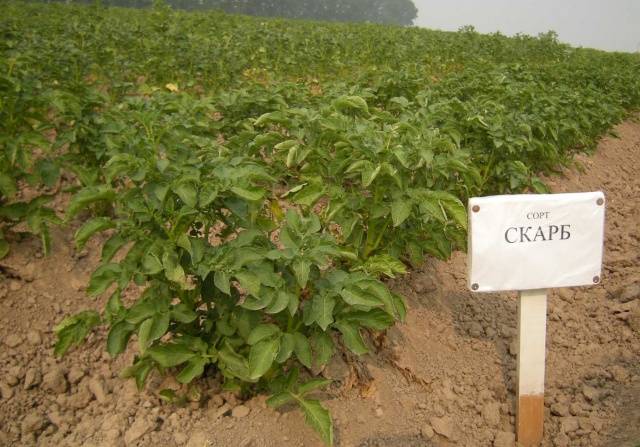
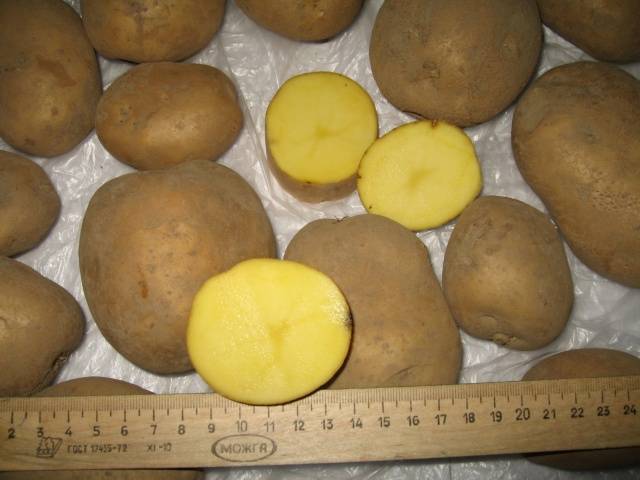
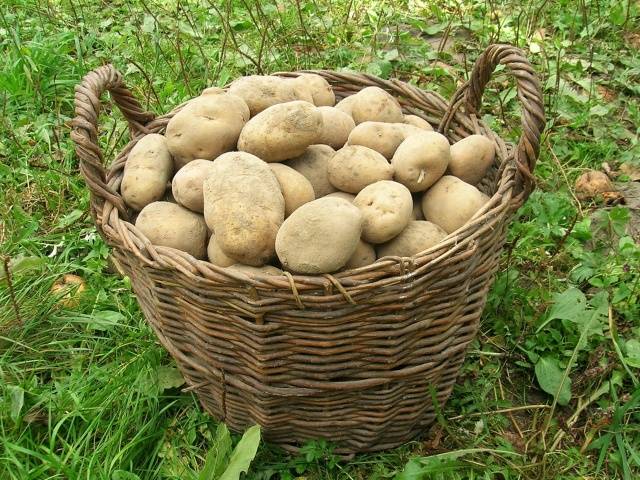
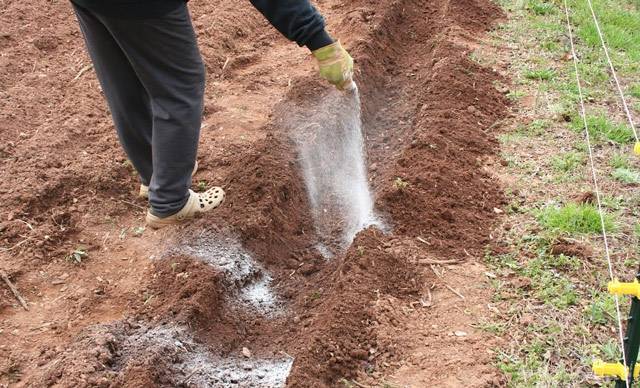
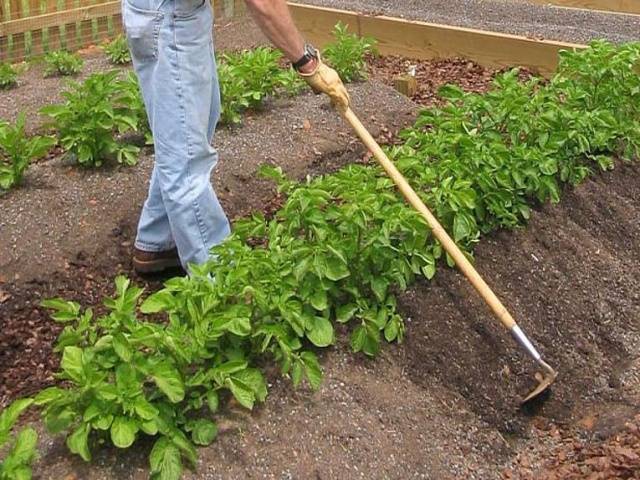
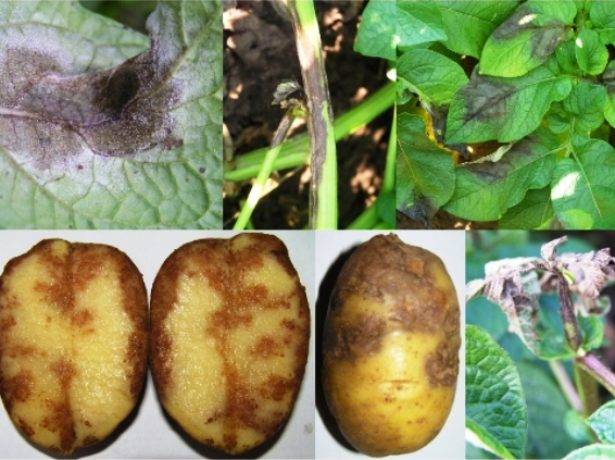

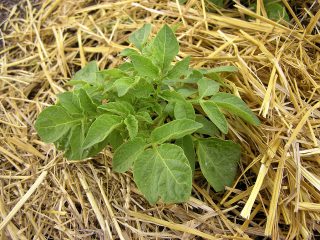
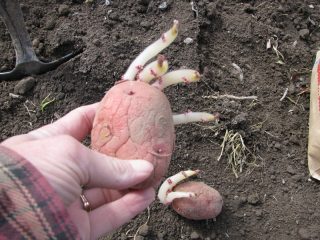






We have also been growing Treasures for a long time, but I would like to share our experience. This procedure gives very good results; I repeat it every three years. During flowering, I cut out one branch at a time from the strongest bushes and make cuttings from them, count four leaves from the bottom cut and cut off the crown. I remove all the large leaves, leave the small leaf that grows from the axil of the main leaf and dig in cuttings - three, like buds, in the ground and one on top. I will reserve a separate place for this planting. Water abundantly in the initial period. I leave it to grow until the end of September. Some cuttings hatch, some die after a while, but in any case they will produce one or more small potatoes, like those that hatch, about the size of a bean. This is gold! Having dug up a handful of these little crumbs, I treasure them like the apple of my eye! Next year I plant them and the entire harvest separately - and you will be surprised what it will be like, I leave it for seeds and use it as usual, it’s like a renewal occurs, many skeptics will argue that the variety cannot be renewed, but my experience speaks for itself. I conducted experiments, planting the same area with “beans” - one part, another part with the harvest from them, as if from the seeds of the second year, and the rest - as usual, with seeds that we select during harvesting. Try it and be surprised! The most luxurious harvest is from the “beans”, then the second and third. Good luck to all potato lovers "Skarb"
We bought an elite SKARB. All bushes are heavily affected by late blight. We won't plant any more.